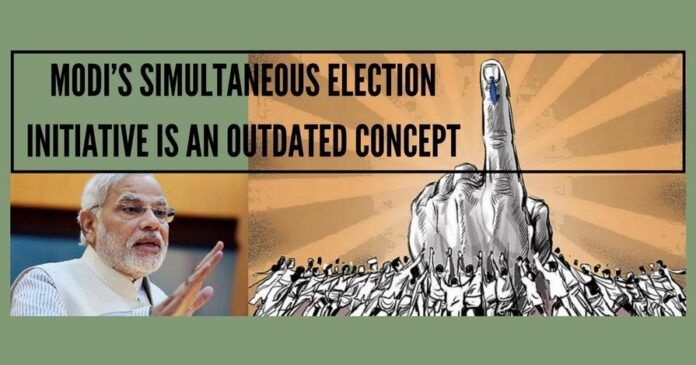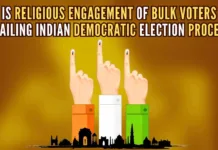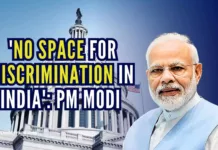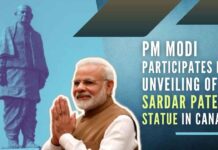
India is a bit too late in the game to be making this kind of election reform
We all recognize that conducting elections is a humongous and a costly affair. Elections come with a big price tag for both, the government and the political parties. It seems Prime Minister Narendra Modi has made up his mind that conducting simultaneous union and assembly elections is the solution to this problem. The math looks simple – the lesser the number of elections, the lesser will be the expenditure for the government and the political parties.
In the recent past, we have witnessed that the more mature and inclusive democracies in the west have had several referendums for matters of national interest
PM Modi also introduced a second argument that with more number of elections come the number of days that governments get confined due to the enforcement of Election Commission’s Model Code of Conduct. If we conduct simultaneous elections, we can reduce the total number of days wasted in a political and governmental hiatus in a given election year. Of course, this argument is based on the assumption that our politicians typically sincerely try to make the best and full use of their finite time in office. Regardless, this argument is a bit of a misnomer. Generally speaking, the Model Code of Conduct prevents a political party from making big popular announcements for appeasement near to the election. The Model Code of Conduct never prevents the executive from executing!
Be that as it may, unfortunately, India is a bit too late in the game to be making this kind of election reform. At this point, the election reforms that India, and for that matter, all democracies in the world, should be focusing on revolving around the use of technology in elections.
Contrary to PM Modi’s vision, democracies are in fact moving towards more frequent elections and referendums. In the recent past, we have witnessed that the more mature and inclusive democracies in the west have had several referendums for matters of national interest. It only makes sense to believe that going forward even states/provinces will begin to conduct referendums for matters of regional interest. Hence, all time and effort spent by politicians and media in India these days discussing the possibility of having lesser number of elections are, frankly, out of place! They must rather be focusing on the use of technology. And the reason for this is simple – advancement in technology and other process innovations have made elections more efficient, cheap, secure, and ubiquitous.
During elections, the most amount of government resources are spent primarily for two reasons:
- Safety on the day of the election.
- Counting of votes after the election.
There was a time when all polling booths had to be heavily manned by security forces mainly to prevent voter frauds (identity thefts and impersonations) and to secure the voting machines from being stolen, destroyed, or in some way manipulated by political hooligans.
Today, with the advent of Aadhar Cards and the biometric system, voter impersonations should technically become impossible. As of 2014, 83.4 crores Voter Ids had been issued, whereas as of 2016, 73.96 crore Aadhar Cards have already been issued to individuals who are 18 and above (eligible to vote). While there are still some glitches in Aadhar in its current structure, in the future, Voter Ids will certainly be replaced with Aadhar Cards. This also solves the problem for citizens who are not physically present in their constituencies on election day. If voter verification will be done electronically using biometrics, a citizen can cast vote from any part of the world. This means a Non-Resident Indian currently domiciled in a foreign country should be able to cast their vote at the nearest Indian Consulate/Embassy in that country.
With regards to the counting of votes – a lot of countries are considering implementing Blockchain technology for maintaining the voting ledger. Recently, Sierra Leone became the first country that successfully made use of a Permissioned Blockchain in their election process. By its inherent nature, a record created in a given Blockchain is irreversible. This means, there will be no possibility of manipulating the counting process if Blockchain technology is correctly implemented. Since all the votes cast will be electronically stored, there will be no real need to physically secure the voting machines for the fear of theft because the machines themselves will not store any vote-related information. The source of truth becomes the Blockchain itself.
Penetration of technology in the election process is inevitable. It is only a matter of time when conducting elections and referendums will no longer be as tedious a task. Going by this premise, the 2024 general election in India will ironically be very special and unique. It may be difficult to implement so many technology-related changes by 2019 though. But again, you would never know what this government might do to stay in power. It is not like not being fully prepared has prevented them from doing certain things in the past anyway!
For a country like India, where regional parties play such a huge role in representing various sections of the society, conducting simultaneous elections will deprive them of their rightful space in the media
The other obvious challenge of simultaneous elections is what if there are hung mandates in certain states? Elections will have to be conducted again in those states anyway. What if a government falls prematurely (say in 3 years instead of a 5 years tenure)? We can not have president’s rule for 2 long years before the next simultaneous election approaches. Also, will the new state government only stay in power for 2 years then? These scenarios will defeat the whole purpose of simultaneous elections, and it will end up becoming an exercise in futility.
There are 2 reasons why PM Modi will still continue to push for simultaneous elections:
- Given the kind of campaigns the BJP has been running in the last 5 years, one can totally see why PM Modi is concerned about his party’s coffers getting dried up. Read it as you may, the big rallies and the Naresh Agarwal’s come at a cost!
- With an eroding public confidence in his government, he may try to prepone the general election from May 2019 to late 2018. That way, he can conduct general elections with other assembly elections of BJP ruled states like Madhya Pradesh and Rajasthan. He will certainly try to market it as a great sacrifice that he will be making by giving up 6 months of his own tenure.
For a country like India, where regional parties play such a huge role in representing various sections of the society, conducting simultaneous elections will deprive them of their rightful space in the media. It is but natural that if general and assembly elections are conducted simultaneously, national issues and tall national leaders will be able to grab the spotlight away from the regional leaders. Hence simultaneous elections are not only an archaic and a myopic initiative, it also poses a serious challenge to the indigenous political fabric of our country. And that is a bigger issue than the cost incurred during elections.
Sources:
- Numbers related to Aadhar Card: http://pib.nic.in/newsite/printrelease.aspx?relid=138555
- Numbers related to Voter IDs: http://eci.nic.in/eci_main1/ElectionStatistics.aspx
- Elections in Sierra Leone: https://qz.com/1227050/sierra-leone-elections-powered-by-blockchain/
- Dispelling four deleterious assumptions: India-China - October 29, 2020
- Dr. Swamy’s 2002 prediction has come true - October 8, 2020
- Book Review – “RESET: Regaining India’s Economic Legacy” - December 30, 2019











Hi Adesh,
Thank you for your comment. If I may humbly say – Regrettably, I believe you arrived at a conclusion contrary to mine. Please allow me to elaborate:
If the objective is to save cost, time, and other resources, let us have zero elections altogether. No?
In my opinion, if we have the correct technology infrastructure, we can have as many elections / referendums and as often as needed. There is absolutely no need to have simultaneous elections for union and states.
Also, an average politician engages in political promotion 24*7. Everything is politics. Politicians and parties will not get less political if we have fewer elections. This appeal for simultaneous elections is just a diversionary tactic used by politicians.
Our problem is incompetence. Our problem is corruption. Our problem is unaccountability. If a politician genuinely wishes, he/she can solve for these problems within our existing system. There is no need to change to simultaneous elections.
I hope this helps clarify. Thank you again for your comment!
Warm regards,
Rishi
I agree with you Rishikesh C. Muchhala
Purav,
Thank you very much brother! Good to hear from you!
– Rishi
I strongly support your point of introducing technology more and more in election processes. If number of elections can be reduced by having simultaneous elections, it would be an added advantage as political parties will be less occupied in rallies, promotion related work and HOPEFULLY more focussed on resolving actual issues.
See reply above